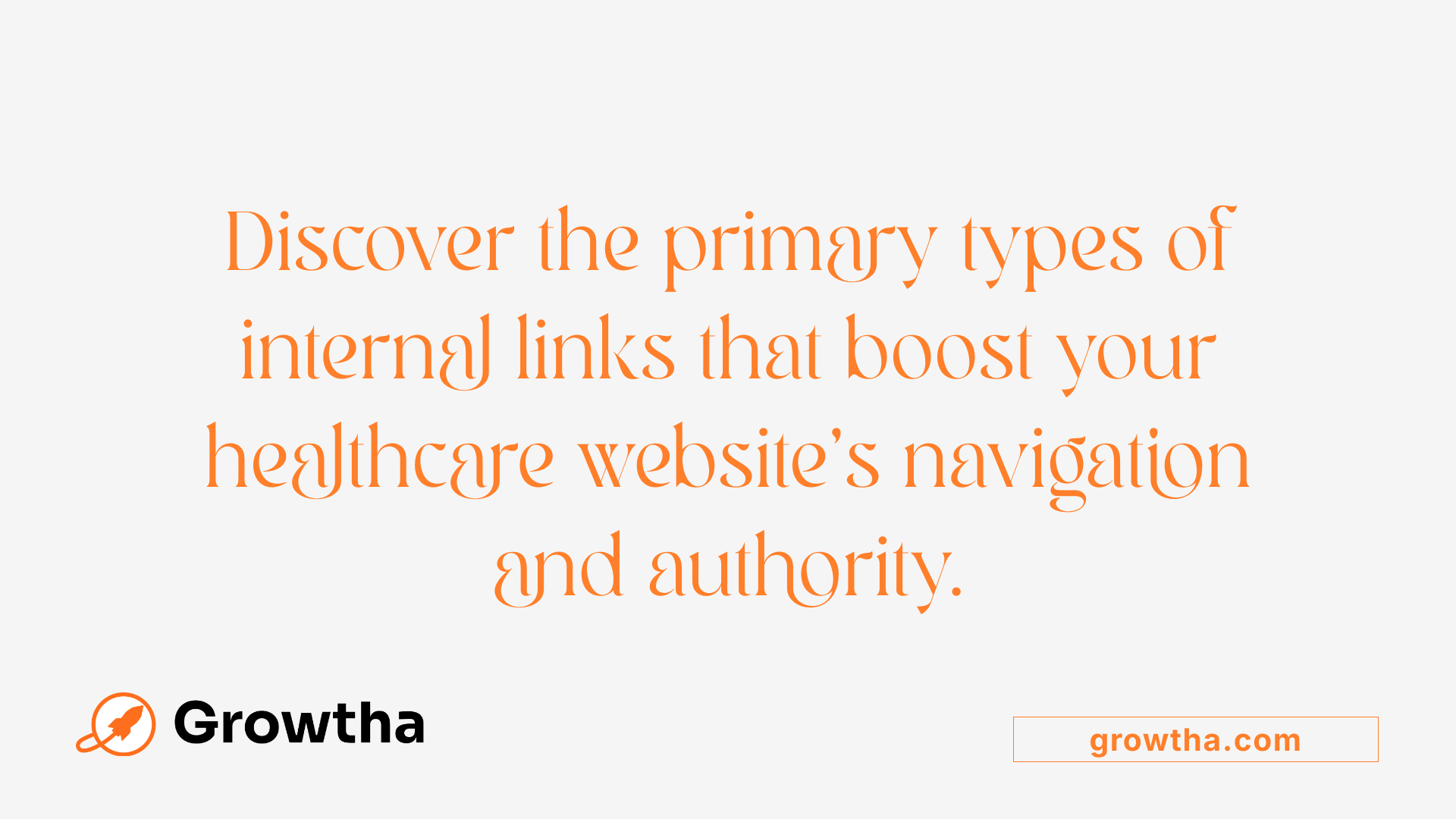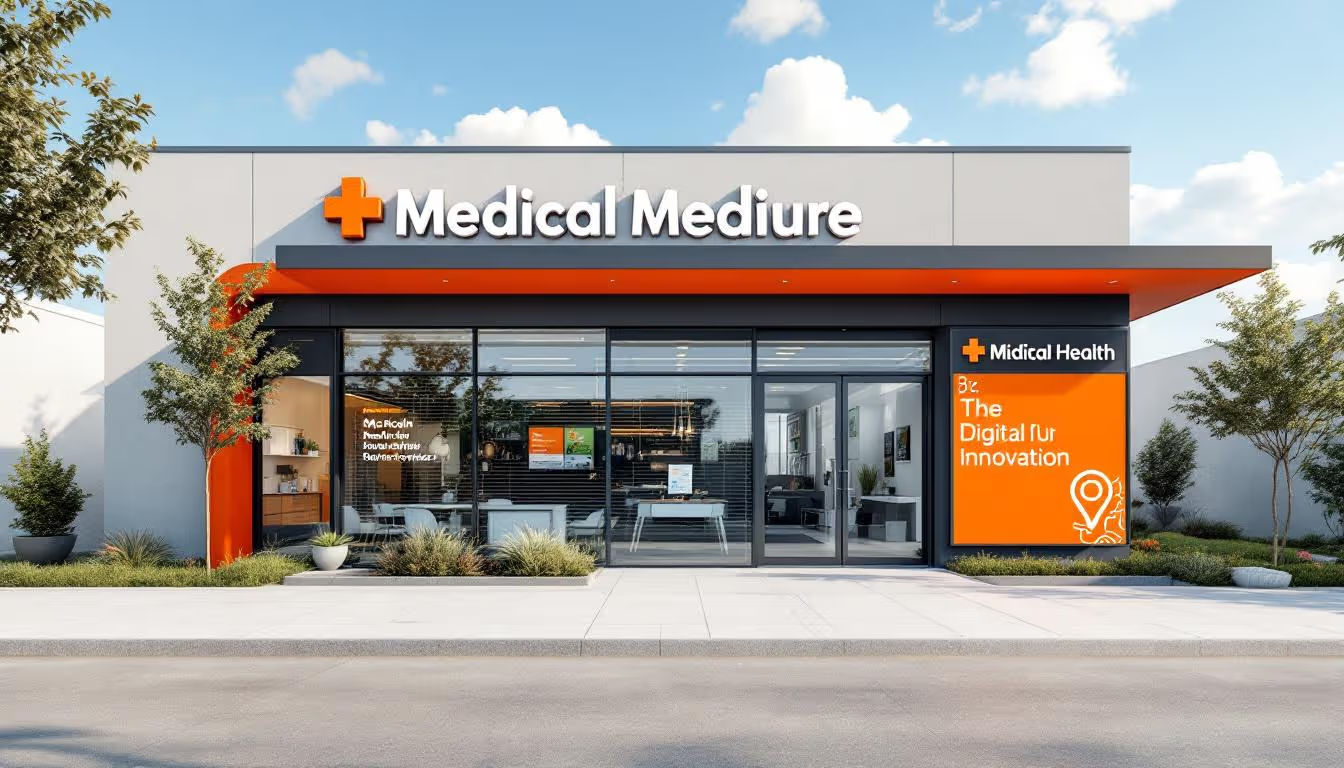How to Use Internal Linking for Healthcare SEO
Optimizing Your Healthcare Website with Strategic Internal Linking


How to Use Internal Linking for Healthcare SEO
Harnessing Internal Links to Boost Healthcare SEO and User Engagement
In the competitive field of healthcare, your website’s SEO strategy profoundly impacts your visibility, authority, and ability to serve patients effectively. Internal linking is a crucial component of this strategy, enabling search engines to crawl and index your content efficiently while guiding users seamlessly through your site. This comprehensive guide explores core principles, best practices, and innovative tools to optimize internal linking, helping healthcare providers improve search rankings, enhance usability, and foster patient trust.
Understanding the Core Principles of Effective Internal Linking in Healthcare SEO
What are the core principles of effective internal linking for healthcare SEO?
Implementing internal linking effectively within healthcare SEO hinges on establishing a clear and logical site structure. This involves highlighting important content areas, such as main service pages or pillar articles, and connecting related subpages through strategic links. Proper internal links should be relevant to the content and naturally embedded within the text, avoiding keyword stuffing and maintaining readability.
Using descriptive anchor texts—that is, brief, clear phrases that accurately describe the linked page—helps search engines grasp the context and relevance of your links. This improves visibility for targeted keywords and enhances the user experience.
Distributing authority from high-ranking, authoritative pages to other internal pages is essential for boosting their rankings. For example, linking from a well-ranked homepage or popular blog to newer or less-visible content helps spread link equity.
It’s equally important to prevent over-optimization by avoiding excessive internal links or irrelevant routing, which can dilute link value. Keeping navigation clean and purposeful ensures that link equity flows to the pages that matter most.
Regular monitoring is vital. Analyzing metrics using tools like Google Search Console or SEO auditing platforms allows healthcare websites to fine-tune their internal linking strategies. These adjustments can improve site crawls, boost engagement, and ensure that users find the most relevant information efficiently.
Overall, a balanced, strategic approach to internal linking enhances both user navigation and search engine understanding, which is crucial for healthcare SEO success.
Main Types of Internal Links in Healthcare SEO
 Internal links are essential for both guiding visitors and helping search engines understand your website's structure. In healthcare SEO, different types of internal links serve specific roles to enhance navigation, content relevance, and site authority.
Internal links are essential for both guiding visitors and helping search engines understand your website's structure. In healthcare SEO, different types of internal links serve specific roles to enhance navigation, content relevance, and site authority.
What are the main types of internal links in SEO?
The primary internal links in SEO include navigational links, contextual links, hierarchical links, footer links, sidebar links, breadcrumb links, and call-to-action (CTA) links.
Navigational Links
These are the main menus, footer menus, and sidebar links that enable users to move through your site easily. They also help search engines understand your site’s main structure.
Contextual Links
Embedded within content, these links connect related pages and provide context. For example, a blog post on diabetes might link to a related article about blood sugar management.
Hierarchical Links
Organize your website in a clear hierarchy, such as parent pages linking to child pages. This helps both users and search engines know which pages are most important.
Footer and Sidebar Links
Often include links to important pages like contact info, policies, or related services, ensuring these are easily accessible from any page.
Breadcrumb Links
Show the user's location within the website hierarchy, allowing easy navigation back to broader categories or home. They improve site usability and crawlability.
Call-to-Action (CTA) Links
Encourage users to take specific actions, like booking appointments or downloading patient forms, while also guiding search engines to prioritize important conversion pages.
Combining these internal link types effectively creates a robust site architecture. It enhances crawlability, distributes authority across important pages, and signals relevance to search engines. For healthcare websites, strategic internal linking improves user experience, helping visitors find essential information quickly while supporting SEO goals.
Enhancing Website Visibility and User Experience with Internal Links
How can internal linking improve a healthcare website's visibility and user experience?
Internal linking plays a vital role in boosting a healthcare website’s visibility and enhancing the experience for visitors. By strategically connecting related pages within the site, internal links help distribute authority and ranking power across important content, making it easier for search engines to crawl and index vital pages.
For users, well-placed internal links create a coherent and logical site structure. This familiar navigation helps visitors find what they need faster, whether they’re looking for specific medical conditions, doctor profiles, or appointment information. Clear and descriptive anchor text—using relevant keywords—adds clarity, guiding users seamlessly through the content.
Implementing effective internal links also encourages visitors to explore more pages, increasing engagement and the time spent on the website. This reduces bounce rates and supports higher rankings in search engine results.
Regular audits of internal links ensure that all connections are functional and relevant, preventing broken links that can harm SEO and user trust. Fixing these issues maintains a smooth browsing experience and encourages continued interaction.
In summary, a focused internal linking strategy leads to better search engine rankings, easier navigation, and a more engaging experience for patients and visitors, ultimately supporting the website’s primary goals of information dissemination and patient engagement.
Implementing Internal Links Strategically on Healthcare Websites
What strategies can be used to implement effective internal links on healthcare websites?
Creating an organized website structure is essential for effective internal linking on healthcare sites. Start by developing pillar pages that serve as comprehensive hubs for core topics, such as services, medical conditions, or patient resources. These pillar pages should link to related content, forming logical content clusters that enhance site navigation and topical authority.
Using descriptive and keyword-rich anchor text is crucial. Instead of generic phrases like "click here," incorporate relevant keywords that clarify the linked page's content, helping search engines recognize relevance and improving rankings.
Prioritize linking high-value and high-traffic pages, such as appointment booking or critical information pages, to ensure they are easily accessible from other sections of the site. This supports user engagement and distributes link authority effectively.
Ensuring every page is interconnected prevents orphaned pages—those without internal links—and enhances their discoverability by search engines. Conduct regular audits to identify and fix broken or outdated links, which maintain a healthy internal structure and good user experience.
Finally, integrate internal links naturally within quality content, like blog posts or educational articles. Combining internal linking with local SEO efforts, such as geo-targeted keywords, can also significantly boost visibility for local healthcare practices.
Avoiding Common Internal Linking Mistakes in Healthcare SEO

What are common mistakes to avoid with internal linking in healthcare SEO?
Internal linking is vital for healthcare websites to improve user navigation and search engine rankings. However, several common mistakes can undermine these efforts.
One frequent error is keyword stuffing, where too many exact match anchor texts are used repetitively. This can appear spammy and diminish SEO value. Instead, use natural, descriptive anchor text that clearly indicates the linked page's content.
Linking to irrelevant or low-value pages is another mistake. Ensure that internal links guide users to related, valuable information that enhances their experience and supports the site’s hierarchy.
Creating orphan pages—those without any inbound links—can make these pages hard for search engines to discover and index. Regularly audit your site to identify and add internal links to these orphaned pages.
Broken links are a common issue that hampers both user experience and SEO. Regularly check for these and update or redirect them promptly to maintain site integrity. Similarly, improper use of redirects can cause SEO authority loss and slow site performance.
Avoid using nofollow attributes excessively on internal links, as they prevent passing valuable link authority within your site. Use rel=follow for important internal links to maximize SEO benefits.
Content updates should include adding internal links to new or refreshed pages, helping search engines recognize their importance and improving their visibility.
Other pitfalls include poor mobile optimization, neglecting local SEO aspects, and ineffective internal link structures that result from inadequate planning. Properly managing these factors helps ensure your healthcare site remains authoritative and accessible.
In summary, avoiding these mistakes—such as irrelevant linking, orphaned or broken pages, improper redirects, and misuse of nofollow tags—can significantly enhance your healthcare website’s SEO performance and user experience.
Internal Linking and Overall Healthcare SEO Efforts
Internal linking is a fundamental aspect of healthcare SEO that significantly influences search rankings. It helps establish authority by connecting important medical content, such as symptom guides, diagnostic procedures, treatment options, and credentials of healthcare providers. These internal connections strengthen trust signals like E-E-A-T (Experience, Expertise, Authority, and Trust), which are especially vital for YMYL (Your Money or Your Life) pages.
A well-structured internal link system clarifies the site’s content hierarchy, making it easier for search engines to understand the importance and relationship of various pages. For example, linking from broad condition overview pages to in-depth articles or specialist profiles improves crawlability and ensures vital content is indexed efficiently.
Distributing PageRank across key pages is another critical benefit. By strategically linking high-authority pages to newer or less visible content, healthcare sites can enhance the prominence of important topics and boost their rankings.
Content depth within a healthcare website is reinforced by internal links that guide users through related information, supporting a comprehensive user experience. This organized structure helps users find relevant details seamlessly, increasing engagement and reducing bounce rates.
In addition, implementing schema markup and structured data on internal links and related pages enhances entity recognition by search engines. Markup of doctor profiles, treatment procedures, and medical conditions signals expertise and credibility, which are crucial for ranking well in healthcare search results.
Furthermore, internal linking must align with regulatory compliance standards. Strategic and conditional linking, based on user consent for sensitive topics, ensures the site adheres to privacy laws and medical advertising guidelines.
Overall, a carefully crafted internal linking strategy distributes authority, underpins a logical content hierarchy, improves crawlability, and signals trustworthiness. These combined efforts foster higher search engine rankings, better user experience, and increased visibility in highly competitive medical niches.
For more insights, search for 'internal linking healthcare SEO strategy'.
Utilizing Tools and Techniques to Identify Internal Linking Opportunities

What tools and methods can identify internal linking opportunities on healthcare websites?
Finding the right internal links within healthcare sites is vital for improving both SEO and user experience. Several tools and techniques can help site owners uncover these opportunities effectively.
SEO auditing platforms like SEMrush, Ahrefs, and SiteSeer analyze existing site structures to detect orphan pages, broken links, and content gaps. These tools provide insights into where internal links are lacking and suggest areas for improvement.
AI-driven solutions such as Twylu, LinkStorm, and Beki AI utilize data from Google Search Console and content analysis methods, including natural language processing (NLP), to recommend relevant internal links. They can prioritize links to high-authority pages and suggest optimal anchor text to improve relevance and search engine signals.
WordPress plugins like Link Whisper, Internal Link Juicer, and Interlinks Manager offer real-time suggestions as content is created or edited. These plugins automate internal linking by automatically inserting links to related content based on predefined criteria, making it easier to keep internal links current and strategic.
Content analysis and topic clustering play a crucial role too. By organizing content into topical groups or pillar pages, healthcare websites can identify key content hubs that should be heavily linked internally. This structure improves content discoverability and topical authority.
Together, these tools and methods allow healthcare website administrators to develop a comprehensive internal linking strategy, ensuring users and search engines can navigate the site efficiently and understand the content hierarchy.
Tailoring Internal Linking Strategies for Different Healthcare Websites
How should internal linking strategies be tailored for different healthcare or clinic websites?
Effective internal linking is crucial for healthcare or clinic websites, but it must be customized to suit each site's unique content and goals.
For local SEO, links should emphasize location-specific pages, such as practice locations and local service areas. Using geographic keywords in anchor texts helps boost visibility in local searches.
Practitioner profiles are often important for building credibility. Linking to detailed profiles from relevant service pages or blog posts helps users learn about the staff and enhances trust.
Service pages should be interconnected with related treatments or specialties. This creates a clear content hierarchy and allows visitors to explore their options easily.
Understanding the site's content structure is vital. Top-level pages like our services or about us should link to deeper content, such as individual procedures, patient resources, or FAQs.
The target audience influences linking patterns. For example, new patients might need clear pathways from the homepage to appointment booking, treatment info, and patient reviews.
Industry-specific knowledge guides the strategic placement of internal links. For instance, linking to condition-specific resources or patient education materials enhances relevance and authority.
Tailoring internal links to these factors improves both user engagement and SEO rankings.
Supporting this, tools like Yoast SEO can help identify opportunities for optimizing internal links, including suggesting relevant pages and anchor texts.
In summary, personalized internal linking strategies that consider location, practitioner details, services, content structure, target audience, and industry context can significantly elevate a healthcare website’s performance and visibility.
Using Internal Links to Improve Content Discoverability and Site Navigation for Healthcare Audiences

How can internal links be used to enhance content discoverability and site navigation for healthcare audiences?
Internal links play a vital role in making healthcare websites more user-friendly and optimized for search engines. They serve as pathways guiding visitors to related and useful information within the site, such as detailed pages on specific conditions, treatment options, or healthcare providers. This seamless navigation encourages users to explore more content, increasing engagement, time spent on the site, and overall satisfaction.
From an SEO standpoint, internal links help search engines understand the site’s structure and the relationship between pages. Clear, strategically placed links can highlight important content, establish topic relevance, and distribute ranking authority across relevant pages. For example, linking from a pillar page on diabetes to related articles about symptoms, medication, and diet creates a content hub that is both easy to navigate and authoritative in the eyes of search engines.
Building content hubs and pillar pages centralized around key healthcare topics allows the website to organize content systematically. Linking these hubs internally to related content nurtures topical authority, making it easier for search engines to index and rank these pages for related healthcare keywords.
Effective internal linking also complements inbound backlinks from reputable sources like medical associations or research organizations. Together, they strengthen the credibility, visibility, and organic reach of healthcare websites.
In summary, well-planned internal links improve content discoverability by guiding users naturally through the site, forming logical and useful pathways that enhance overall site navigation and SEO performance.
Determining the Optimal Number of Internal Links per Page for SEO
 The number of internal links a page should contain depends on its content, purpose, and overall site structure. There isn't a strict universal rule, but best practices suggest aiming for about 5 to 10 links per 2,000 words of content. This roughly equates to one internal link every 200-300 words, which provides enough pathways for users to discover related pages without overwhelming or diluting the link authority.
The number of internal links a page should contain depends on its content, purpose, and overall site structure. There isn't a strict universal rule, but best practices suggest aiming for about 5 to 10 links per 2,000 words of content. This roughly equates to one internal link every 200-300 words, which provides enough pathways for users to discover related pages without overwhelming or diluting the link authority.
Limiting the total number of internal links to around 100-150 per page helps prevent appearing spammy and ensures the most important pages are prioritized. Furthermore, maintaining a shallow site architecture—where key pages are reachable within three clicks from the homepage—enhances crawl efficiency and visibility.
Effective internal links should complement the content naturally, with descriptive anchor text that clearly indicates the linked page’s topic. Such relevance not only improves user experience but also signals relevance to search engines.
In terms of crawl depth and site hierarchy, a pyramid-like structure with prominent pages linked from various content areas facilitates better crawlability and SEO performance. Regular audits can help refine your internal linking strategy, ensuring your page links remain relevant and optimal for both users and search engines.
Maximizing SEO Impact with Thoughtful Internal Linking
Effective internal linking is a powerful strategy for healthcare websites to improve search rankings, enhance user experience, and build site authority. By understanding core principles, employing strategic methods, and utilizing advanced tools, healthcare providers can create a cohesive, easily navigable site that both users and search engines value. Regular audits, avoidance of common mistakes, and tailoring strategies to specific healthcare niches ensure optimal performance. Emphasizing relevance, natural integration, and a balanced number of internal links will support long-term SEO success and better patient engagement. When executed thoughtfully, internal linking becomes an indispensable part of an overall healthcare SEO strategy that drives measurable results.
References
- Internal linking for SEO: Why and how? • Yoast
- Internal Link like a Pro Using This SEO Guide | Conductor
- Internal Linking Mistakes & How to Fix Them
- Internal Links: Ultimate Guide + Strategies - Semrush
- 5 Effective Internal Linking Strategies to Improve Your SEO
- Mastering Internal Links: Essential Strategies for SEO - Bluehost
- Medical SEO Link Building Services - Included in PLATINUM
- Why Internal Link Structure Matters For SEO Health - diib® - Learn
- Internal Linking SEO Best Practices & Benefits | Victorious
- Do Internal Links Help SEO? | Mediboost







